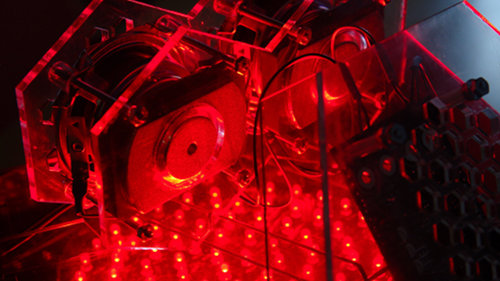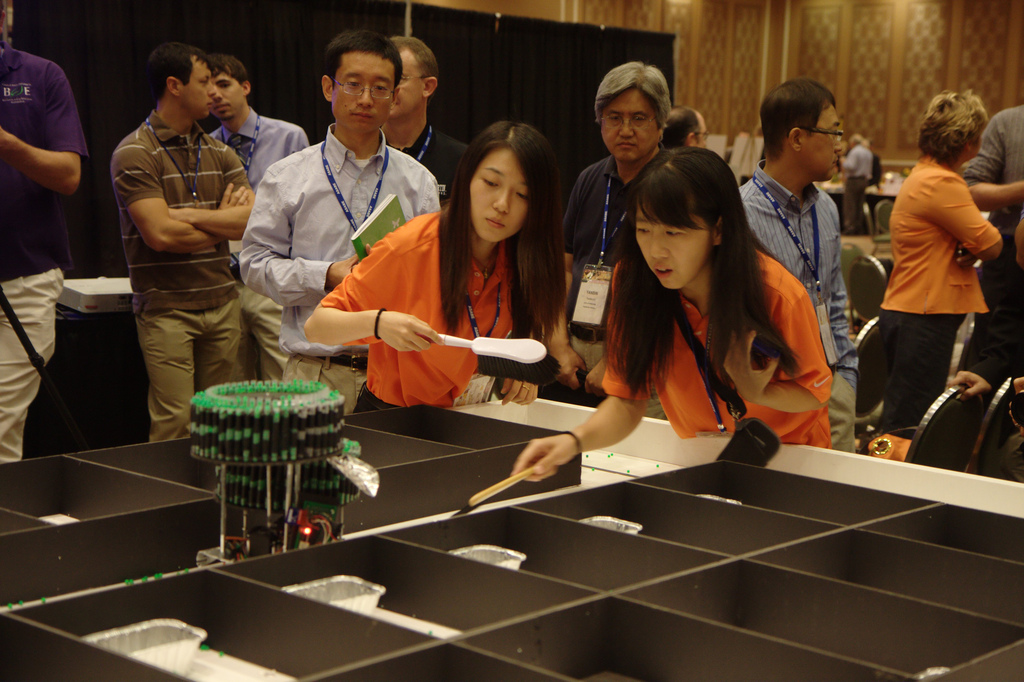
The Hexagonal Repurposed Junk Array #1
I finally got around to writing an article on the construction of the Hexagonal Repurposed Junk Array #1, my art piece for RZN8, this year’s Art Conspiracy SEED auction. The piece was made from surplus electronics and laser-cut salvaged acrylic. It functioned as a combination speaker dock and retro-style light organ for MP3 players. And for those who were about to ask: my audio player is a Sansa Clip+ running Rockbox, the open source audio player firmware that runs on some iPods and other players.
My write-up includes lots of photos and some video shot during construction and after completion. There are links to more photos of the piece and of the ArtCon RZN8 auction. I included all the SVG drawings used to laser cut the parts. I provided a brief description of the LED driver circuit but didn’t bother including a schematic since it only has four components and is pretty trivial. The speaker pods would probably have to be modified to fit another pair of speakers but, otherwise, I think there’s enough info in the article to allow you to build your own unit. If you build one, send me a photo.

